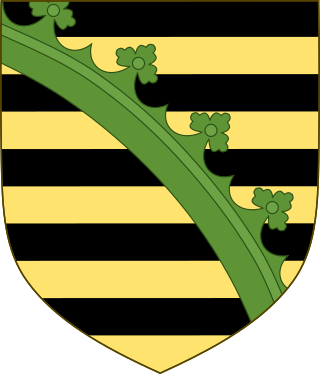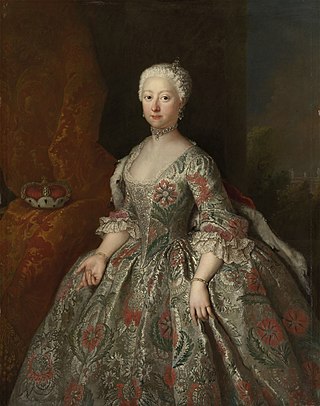
The House of Wettin was a dynasty which included Saxon kings, prince-electors, dukes, and counts, who once ruled territories in the present-day German federated states of Saxony, Saxony-Anhalt and Thuringia. The dynasty is one of the oldest in Europe, and its origins can be traced back to the town of Wettin, Saxony-Anhalt. The Wettins gradually rose to power within the Holy Roman Empire. Members of the family became the rulers of several medieval states, starting with the Saxon Eastern March in 1030. Other states they gained were Meissen in 1089, Thuringia in 1263, and Saxony in 1423. These areas cover large parts of Central Germany as a cultural area of Germany.

Weißenfels is the largest town of the Burgenlandkreis district, in southern Saxony-Anhalt, central Germany. It is situated on the river Saale, approximately 30 km (20 mi) south of Halle.

Frederick II, Duke of Saxe-Gotha-Altenburg, was a duke of Saxe-Gotha-Altenburg.

John William III, Duke of Saxe-Eisenach, was a duke of Saxe-Eisenach, and came from the Ernestine line of the House of Wettin.

Augustus of Saxe-Weissenfels, was a Duke of Saxe-Weissenfels-Querfurt of the House of Wettin and administrator of the Archbishopric of Magdeburg.

Johann Adolf I, Duke of Saxe-Weissenfels, was a duke of Saxe-Weissenfels-Querfurt and member of the House of Wettin. He was the first son of Augustus, Duke of Saxe-Weissenfels, and his first wife, Anna Maria of Mecklenburg-Schwerin.

Johann Adolf II was the last Duke of Saxe-Weissenfels from 1736 to 1746. Following his death without surviving male issue, the Duchy returned to Electoral Saxony. Johann Adolf was also a commander in the Saxon Army.

Heinrich of Saxe-Weissenfels, Count of Barby, was a German prince of the House of Wettin and count of Barby.

Saxe-Weissenfels was a Duchy of the Holy Roman Empire from 1656 until 1746 with its residence at Weißenfels. Ruled by a cadet branch of the Albertine House of Wettin, the duchy passed to the Electorate of Saxony upon the extinction of the line.

Erdmann II, Count von Promnitz was Lord of Żary and Trzebiel in Lower Lusatia, and Pszczyna in Upper Silesia.

Louis Frederick I of Schwarzburg-Rudolstadt was the ruling prince of Schwarzburg-Rudolstadt, Count of Hohenstein, Lord of Rudolstadt, Blankenburg and Sondershausen from 1710 until his death.

Magdalene Sibylle of Saxe-Weissenfels, was a German noblewoman member of the House of Wettin and by marriage Duchess of Saxe-Eisenach.

Johanna Magdalena of Saxe-Altenburg was a member of the House of Wettin. She was a Duchess of Saxe-Altenburg by birth and by marriage a Duchess of Saxe-Weissenfels-Querfurt.

Christine Juliane of Baden-Durlach, was a German noblewoman of the House of Zähringen and by marriage Duchess of Saxe-Eisenach.
Johanna Walpurgis of Leiningen-Westerburg, was a German noblewoman member of the House of Runkel and by marriage Duchess of Saxe-Weissenfels.

Fredericka Elisabeth of Saxe-Eisenach, was a German noblewoman member of the House of Wettin and by marriage Duchess of Saxe-Weissenfels.

Fredericka of Saxe-Gotha-Altenburg, was a German princess, a member of the House of Wettin and by marriage Duchess of Saxe-Weissenfels.

Elisabeth Albertine of Anhalt-Dessau, was a German noblewoman by birth Princess of Anhalt-Dessau as member of the House of Ascania and by marriage Duchess of Saxe-Weissenfels-Barby.
Countess Emilie Agnes Reuss of Schleiz, was a German noblewoman member of the House of Reuss and by her two marriages Countess of Promnitz-Pless and Duchess of Saxe-Weissenfels-Dahme.

Christine Johanna Emilie, Princess of Anhalt-Köthen was the second wife and consort of Augustus Louis, Prince of Anhalt-Köthen.


















